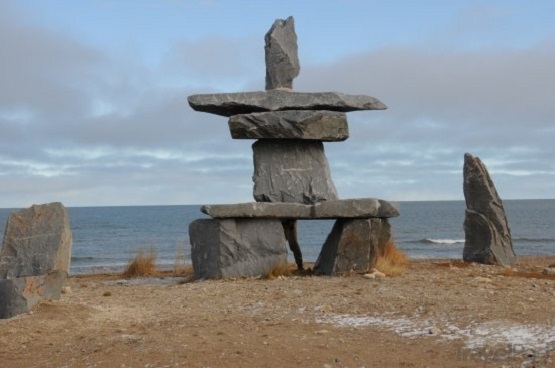
These stone monuments serve to guide and protect the traveler
The Inuksuk are large stone monuments or stilts used by the Inuit, Inupiat, Kalaallit, Yupik, and other Aboriginal peoples of the Arctic region of North America.
On Baffin Island, there is Inuksuk Point where there are 100 Inuksuit, which is why the place was designated as a National Historic Site of Canada in 1969.
Such Inuksuk structures are found from Alaska to Greenland. This region, above the Arctic Circle, is dominated by the tundra biome, an arid and largely treeless ecosystem, containing areas with few natural landmarks.
The traditional meaning of inuksuk is "Someone was here" or "You are on the right path." The inuksuk may have used for navigation, as a landmark, a hunting ground marker, or some combination of the above.
The Inuksuk vary in shape and size, but all share deep roots in Inuit culture. Historically, the most common type of inuksuk is a single stone placed vertically.
A structure similar to an Inuksuk but supposed to represent a human figure, a so-called inunnguaq, "imitation of a person"), has become widely familiar with the non-Inuit. However, it is not the most common type of inuksuk.
Inuksuk continue to serve as an important Inuit cultural symbol. For example, an inuksuk is displayed on the flag and coat of arms of the Canadian territory of Nunavut, and the high school in Iqaluit is named Inuksuk High School after the landmarks.